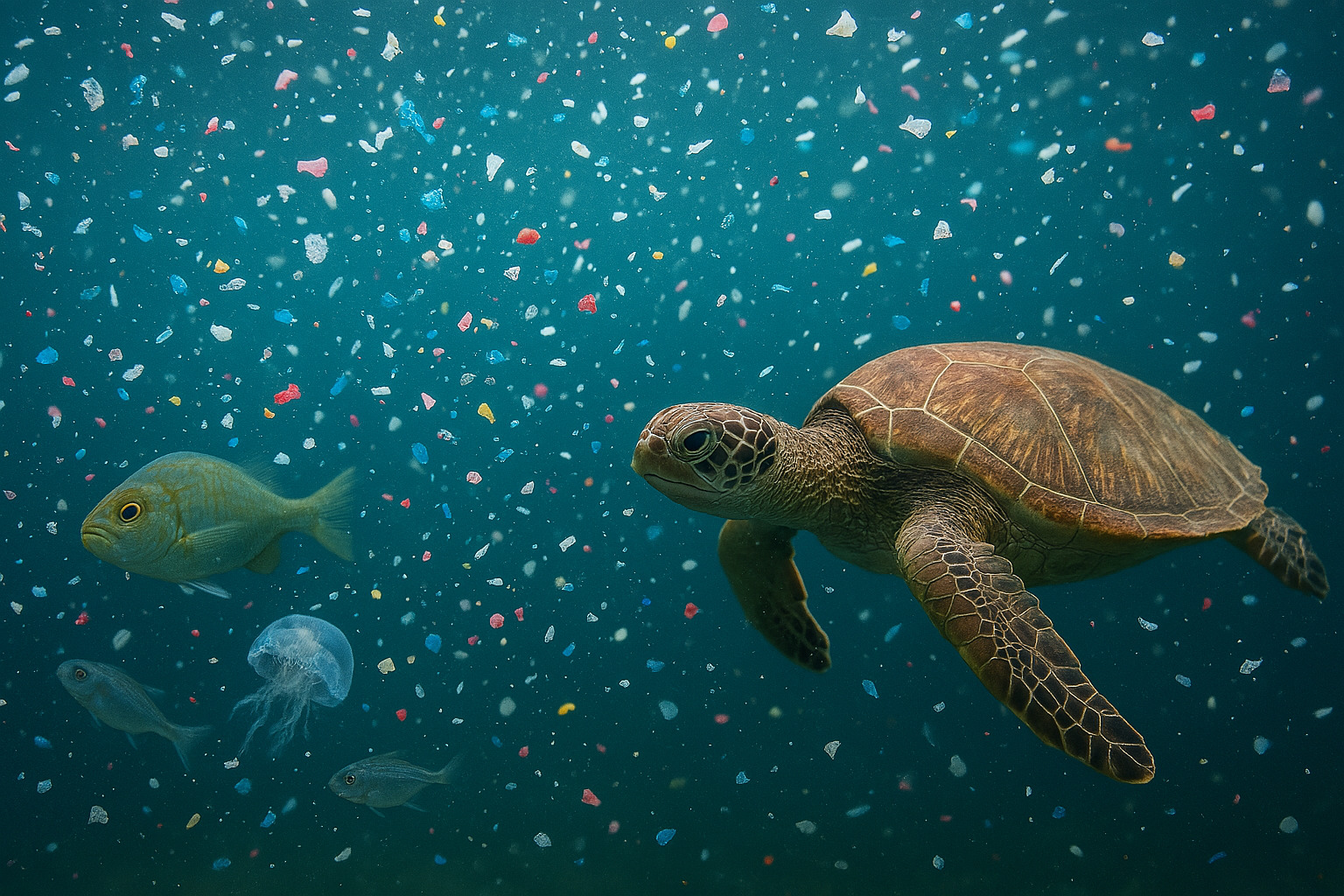Microplastics are harming ocean life by infiltrating every layer of the marine food web. These tiny particles, often smaller than 5 millimeters, are consumed by marine creatures, disrupting biological processes and threatening ecosystems globally.
What Are Microplastics?
Microplastics originate from two main sources:
- Primary microplastics: Tiny plastics manufactured for products like cosmetics and industrial abrasives.
- Secondary microplastics: Resulting from the breakdown of larger plastic debris through sunlight, waves, and mechanical forces.
Their size allows them to be mistaken for food by marine organisms, leading to ingestion across a wide range of species.
How Microplastics Impact Marine Animals
1. Physical Damage
Small fish, plankton, and even whales accidentally consume microplastics. Once ingested:
- Plastics can block digestive tracts.
- Organisms may starve with full stomachs containing no nutrients.
- Sharp fragments can cause internal injuries.
2. Toxic Chemical Transfer
Microplastics act like sponges, absorbing harmful chemicals from seawater:
- Persistent Organic Pollutants (POPs) such as DDT and PCBs attach to plastics.
- When ingested, these toxins move into animal tissues, leading to reproductive failure, liver damage, and hormonal disruptions.
3. Disruption of Growth and Reproduction
Studies show that microplastics interfere with:
- Larval development in oysters and mussels.
- Hatching rates in fish eggs.
- Sperm production and motility in marine invertebrates.
Small changes in reproductive success have long-term effects on population stability.
4. Bioaccumulation and Biomagnification
As microplastics move up the food chain:
- Predators ingest prey filled with plastics and toxins.
- Concentrations intensify at higher trophic levels, impacting larger fish, seabirds, and mammals, including species critical for human consumption.
Species Most Affected
- Zooplankton: Base of the marine food chain; ingestion impacts the entire ecosystem.
- Sea turtles: Mistake floating plastic for jellyfish, leading to choking and gut impaction.
- Seabirds: Found with stomachs full of plastic, leading to malnutrition and death.
- Whales: Large filter-feeders accidentally ingest massive quantities through feeding.
Wider Environmental Impacts
Microplastics:
- Alter sediment structure, affecting organisms that live on the ocean floor.
- Damage coral reefs by physically blocking light and carrying pathogens.
- Disrupt the carbon cycle by harming plankton, which play a role in carbon sequestration.
What Can Be Done
Reduce Plastic Waste
- Use reusable bags, bottles, and containers.
- Choose products without microbeads.
- Support policies that ban single-use plastics.
Support Clean-up Initiatives
- Participate in beach clean-ups.
- Fund organizations focused on ocean conservation.
Advocate for Research and Innovation
- Promote studies into biodegradable materials.
- Encourage improved wastewater treatment technologies to trap microplastics before they reach the ocean.
Final Thoughts
Microplastics have created a persistent threat that trickles through every corner of ocean life. Addressing this problem requires consistent action across individual, community, and global levels. Every piece of plastic prevented from reaching the ocean matters to the survival of marine ecosystems.
